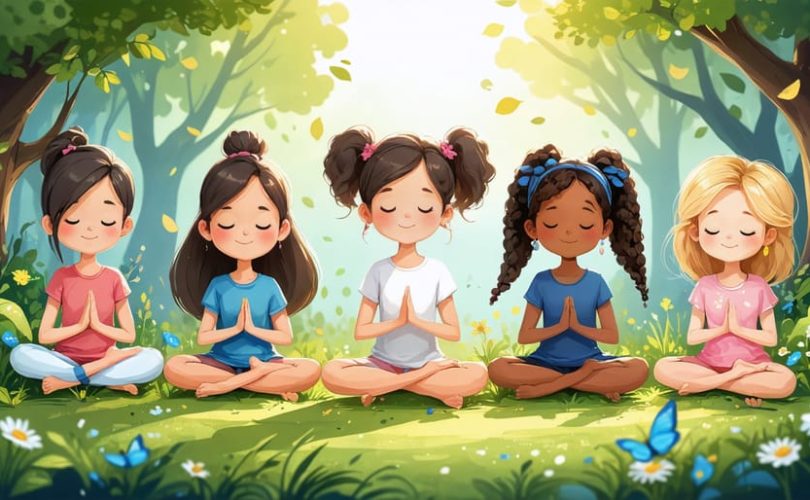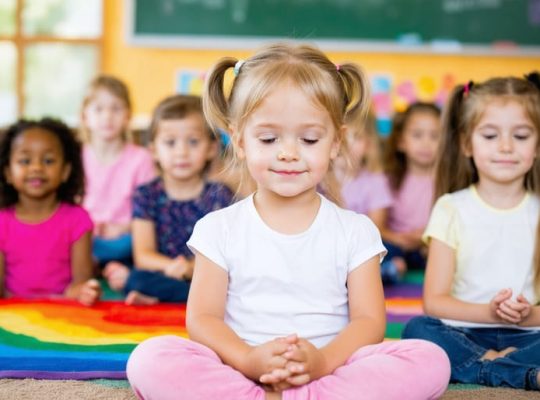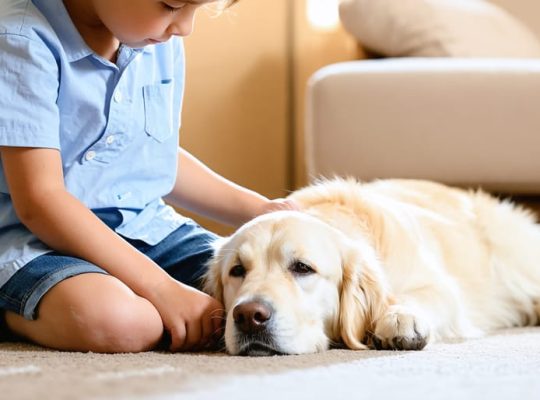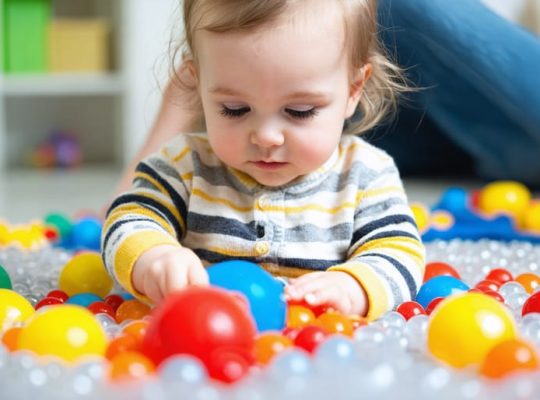In today’s fast-paced digital world, teaching children mindfulness has become not just beneficial, but essential. Research shows that mindful youth experience reduced anxiety, better academic performance, and stronger emotional regulation skills. As parents and educators, we can strengthen your child’s mind through simple, daily practices that create lasting positive impacts.
The beauty of mindfulness lies in its accessibility – children as young as three can begin practicing these techniques. Whether it’s taking three deep breaths before a challenging task, observing nature during a walk, or spending five minutes in quiet reflection before bedtime, these small moments add up to significant developmental benefits. More importantly, when families practice mindfulness together, it creates a supportive environment where emotional awareness and mental well-being become natural parts of daily life.
Modern research backs what ancient wisdom has long known: mindful children grow into resilient, emotionally intelligent adults. By introducing these practices early, we’re not just helping our children navigate current challenges – we’re equipping them with lifelong tools for mental health and personal growth. The journey toward mindfulness isn’t about perfection; it’s about progress, presence, and the power of shared moments of awareness between parent and child.
Why Children Need Mindfulness Today
The Rising Mental Health Challenge
Recent studies paint a concerning picture of youth mental health in today’s fast-paced world. According to the CDC, 1 in 5 children experiences a mental health condition, with anxiety and depression rates showing a marked increase over the past decade. The pressures of academic performance, social media, and global uncertainties have created new challenges for our young ones.
Dr. Sarah Chen, a child psychologist, notes that children as young as six are showing signs of stress-related symptoms. “What we’re seeing isn’t just temporary worry – it’s a pattern that needs attention and proper support through a comprehensive mental health toolkit,” she explains.
The good news is that early intervention and awareness make a significant difference. Parents and educators are increasingly recognizing these challenges and seeking proactive solutions. This growing understanding has led to more open discussions about mental health in schools and homes, breaking down stigma and creating supportive environments where children feel safe expressing their emotions.
Benefits of Early Mindfulness Practice
Research consistently shows that introducing mindfulness practices during childhood creates a strong foundation for lifelong emotional well-being. When young minds learn mindfulness early, they develop crucial skills that help them navigate life’s challenges with greater resilience and self-awareness.
Children who practice mindfulness regularly show improved concentration and academic performance. Studies have found that even brief mindfulness exercises can help young students maintain focus during lessons and retain information more effectively. Beyond the classroom, these children often demonstrate better emotional regulation, showing fewer instances of impulsive behavior and decreased anxiety levels.
The social benefits are equally remarkable. Mindful children typically display increased empathy and stronger relationship-building skills. They’re better equipped to understand their own emotions and those of others, leading to more meaningful friendships and positive social interactions.
Physical benefits include better sleep patterns and reduced stress responses. Many parents report that their children who practice mindfulness have fewer complaints about stomach aches and headaches often associated with anxiety. These young practitioners also develop healthy coping mechanisms that serve them well into adolescence and adulthood.
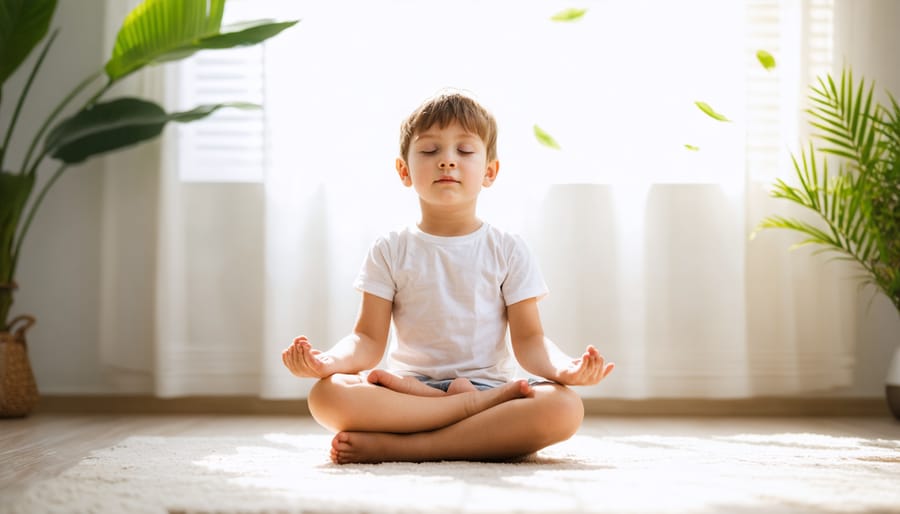
Age-Appropriate Mindfulness Activities
Preschoolers (3-5 years)
Preschoolers are naturally curious and energetic, making this age perfect for introducing mindfulness through playful activities. Simple breathing exercises can be transformed into engaging games that capture their imagination. Try “Balloon Belly,” where children lie down and place a small stuffed animal on their tummy, watching it rise and fall as they breathe deeply.
Sensory activities are particularly effective for this age group. The “Mindful Touch Box” game involves placing different textured items in a box and having children describe how each object feels. This helps develop awareness of sensations while building vocabulary. Similarly, the “Silent Listening Game” encourages children to close their eyes and identify various sounds around them.
Another favorite is “Peaceful Pepper,” where children pretend to be a piece of pepper floating in a bowl of warm water, encouraging gentle movement and body awareness. For active preschoolers, “Butterfly Wings” combines mindful movement with breathing – children flap their arms slowly like butterfly wings while taking deep breaths.
Remember to keep sessions short (3-5 minutes) and maintain a playful atmosphere. Use positive reinforcement and join in the activities to make them more engaging. If a child seems uninterested, it’s perfectly fine to try again another day or switch to a different mindfulness game that better suits their interests.
School-Age Children (6-11 years)
School-age children are naturally curious and energetic, making this age perfect for introducing structured mindfulness practices. Start with simple 5-minute guided meditations focused on breathing awareness, gradually extending the duration as their attention span develops.
A popular exercise is the “Butterfly Breathing” technique, where children place their hands on their belly and imagine a butterfly gently landing on a flower. As they breathe in and out, they can feel their belly rise and fall like butterfly wings. This visualization helps maintain their interest while teaching breath awareness.
Mindful movement activities are particularly effective for this age group. The “Weather Report” exercise encourages children to notice and express their emotions through movement – they might sway like trees in the wind when feeling uncertain or stand tall like a mountain when feeling strong.
Many teachers report success with the “Mindful Minute” approach, where children take short breaks between activities to ground themselves. During these moments, they can focus on sensory experiences like listening to a bell ring or feeling their feet on the floor.
Remember to keep the practice playful and non-competitive. Praise effort rather than results, and allow children to share their experiences without judgment. Many parents find that practicing alongside their children creates valuable bonding time while modeling mindfulness behaviors.
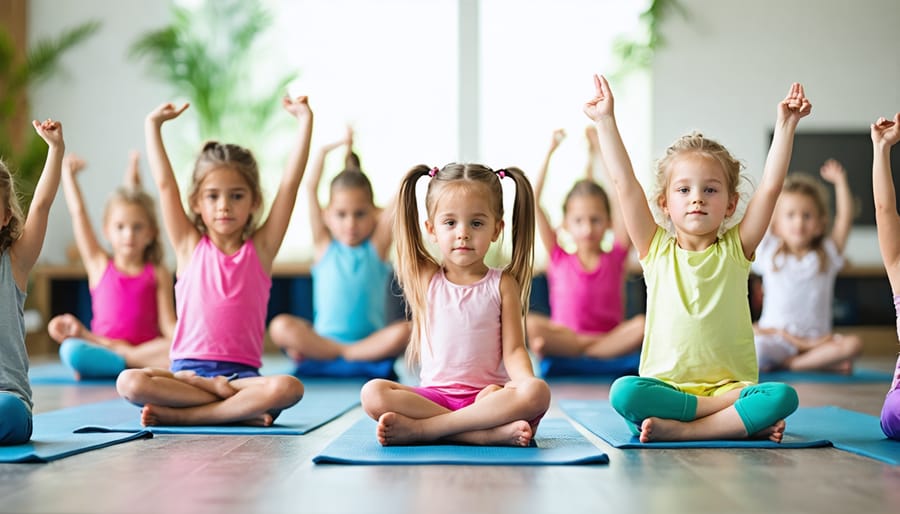
Tweens and Teens (12+ years)
As teens navigate increasingly complex social and academic pressures, mindfulness becomes an invaluable tool for supporting teens’ mental health. At this age, they’re ready for more sophisticated mindfulness practices that align with their growing independence and self-awareness.
Encourage teens to start with a 10-15 minute daily meditation practice, focusing on breath awareness or body scanning. These practices can help them manage stress during challenging situations like exams or social conflicts. Many teens find success using mindfulness apps that offer guided meditations specifically designed for their age group.
Journaling is particularly effective for this age range, as it combines mindfulness with self-expression. Suggest thought-provoking prompts like “What brought me peace today?” or “How did my emotions affect my choices?” This reflection helps teens develop emotional intelligence and self-awareness.
Group mindfulness activities, such as mindful walking or eating exercises, can be especially appealing to teens who value peer connections. These shared experiences normalize mindfulness practice and create supportive environments for personal growth.
Remember to respect their need for autonomy – allow them to choose when and how they practice mindfulness, while gently encouraging consistency. Many teens report better focus, reduced anxiety, and improved sleep when they maintain regular mindfulness practices.
Making Mindfulness a Family Practice
Creating a Mindful Home Environment
Creating a mindful environment at home begins with designating a calm, quiet space where children can practice mindfulness without distractions. This doesn’t require an entire room – even a cozy corner with soft cushions, gentle lighting, and perhaps a few meaningful objects like a smooth stone or a favorite stuffed animal can serve as a perfect mindfulness spot.
Establish regular routines that incorporate mindful moments throughout the day. This might include taking three deep breaths before meals, spending a few minutes observing nature through a window, or practicing quiet reflection before bedtime. Keep electronics and screens away from these designated spaces to maintain their peaceful atmosphere.
Consider incorporating natural elements like plants, which can help create a more serene environment. Simple wind chimes or a small water fountain can provide gentle background sounds that promote relaxation. Display children’s artwork or family photos that evoke positive emotions and connection.
Remember that a mindful home environment isn’t just about physical space – it’s about creating an atmosphere where children feel safe to express their emotions and practice mindfulness naturally. Model mindful behavior yourself, speaking calmly and moving with intention through daily activities.
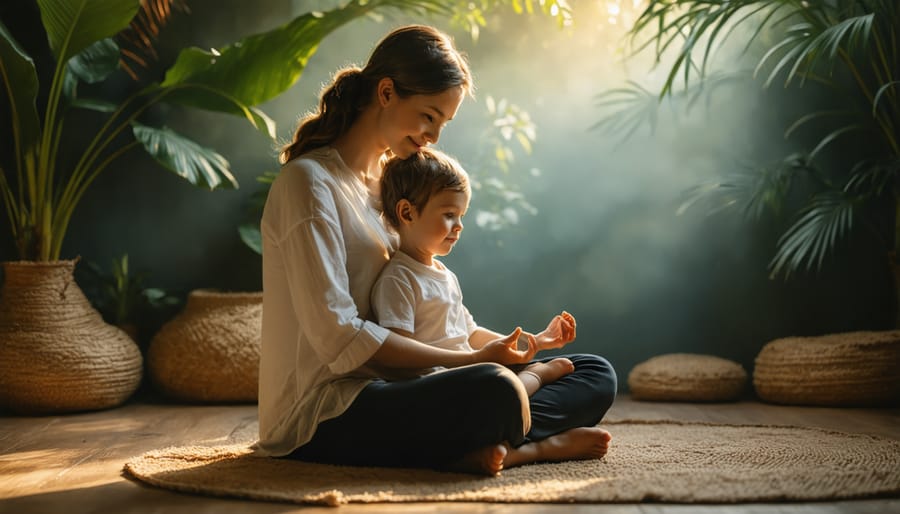
Modeling Mindfulness as Parents
Children learn best by example, and mindfulness is no exception. As parents, our own practice of mindfulness creates a foundation for a healthy family dynamic and teaches our children valuable emotional skills.
Start by incorporating simple mindful moments into your daily routine. Take deep breaths before responding to stressful situations, express gratitude during family meals, or pause to notice the beauty in everyday moments. When children see you managing stress through mindfulness, they naturally begin to mirror these behaviors.
Be transparent about your mindfulness journey. Share with your children when you’re feeling overwhelmed and demonstrate how you use mindfulness techniques to calm down. For example, say, “I’m feeling frustrated right now, so I’m going to take three deep breaths to help me feel better.”
Remember that perfection isn’t the goal. Some days will be easier than others, and that’s okay. What matters is consistently showing your children that mindfulness is a valuable tool for emotional well-being and self-regulation. Your authentic practice will inspire them far more than any theoretical lesson could.
Signs of Success and When to Seek Help
When children engage in mindfulness practices, positive changes often emerge gradually. Parents and teachers may notice improved focus during homework time, better emotional regulation during challenging situations, and increased self-awareness in daily interactions. Children might start using breathing techniques unprompted during stressful moments or express their feelings more clearly.
Physical signs of success can include better sleep patterns, reduced complaints about stomachaches or headaches, and a more relaxed demeanor. You might observe your child taking mindful pauses before reacting to situations or showing more empathy toward siblings and peers.
Dr. Sarah Chen, a child psychologist, notes, “When mindfulness is working, children often become more present in conversations and show greater patience in waiting situations. They might even teach their friends simple mindfulness techniques they’ve learned.”
However, it’s important to recognize when additional support might be needed. Watch for signs such as:
– Persistent anxiety or worry that interferes with daily activities
– Difficulty sleeping even after consistent mindfulness practice
– Ongoing struggles with emotional regulation
– Resistance to mindfulness that stems from deeper concerns
– Physical symptoms that don’t improve with mindfulness
If you notice these signs, consider consulting a mental health professional who specializes in youth counseling. Remember that mindfulness works best as part of a comprehensive approach to well-being, and seeking help is a sign of strength, not weakness.
Many families find that combining mindfulness with professional guidance yields the best results. As one parent shares, “We noticed our daughter wasn’t just anxious, but needed additional tools. Working with a counselor while maintaining our mindfulness routine made a huge difference.”
Trust your instincts as a parent or caregiver. If something doesn’t feel right, it’s okay to seek professional guidance while continuing to support your child’s mindfulness journey.
As we’ve explored throughout this article, mindfulness offers tremendous benefits for young people’s mental, emotional, and social development. By introducing these practices early, we give our children valuable tools they can carry with them throughout their lives. Remember that starting small is perfectly fine – even just a few minutes of mindful breathing or gentle movement can make a meaningful difference.
The key is consistency and creating a supportive environment where mindfulness becomes a natural part of your family’s daily routine. Whether it’s practicing gratitude at dinner time, taking mindful walks together, or starting the day with a brief meditation, these shared experiences strengthen family bonds while building essential life skills.
Don’t feel pressured to be perfect – mindfulness is a journey, not a destination. Celebrate small victories and be patient as both you and your children develop these new habits. Watch for signs of progress, like improved emotional regulation, better sleep patterns, or increased self-awareness. These indicators show that your efforts are making a positive impact.
Starting today, choose one simple mindfulness activity that resonates with your family and commit to practicing it regularly. As your comfort level grows, gradually incorporate additional techniques. Remember that every child is unique, so remain flexible and adapt practices to suit your family’s specific needs and preferences.
By investing in mindfulness now, you’re helping create a foundation for lifelong emotional wellbeing and resilience. Your children will thank you for giving them these valuable tools to navigate life’s challenges with greater awareness, compassion, and inner strength.

